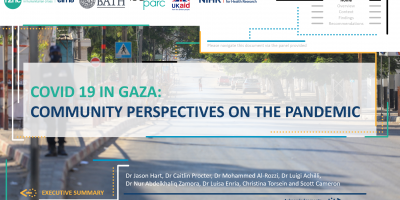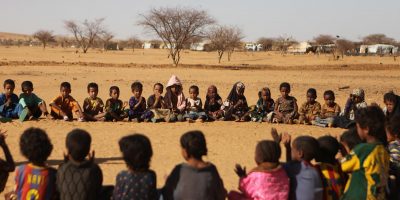Introduction
It has been 100 days since Israel launched attacks in Gaza that have seen more than 24,000 people killed since the beginning of October 2023, including more than 10,000 children. Thousands more are estimated to be missing, with many buried under the rubble.
Millions of Palestinians have long struggled to live with dignity under occupation, facing coercive practices and political divisions. On 7 October 2023, Palestinian armed groups attacked multiple locations in Israel, killing about 1,200 Israelis and foreign nationals. In retaliation, constant and indiscriminate bombardment of Gaza since 7 October has displaced 1.9 million people, or nearly 85 percent of the total population of Gaza, and attacks have continued as people have fled to seek safety. This comes on the heels of 15 years of near-complete closure of the Gaza Strip, multiple wars, and skyrocketing unemployment rates. According to the World Health Organization (WHO), “no-one and nowhere is safe in Gaza,” with UNICEF calling it the most dangerous place on earth to be a child. Challenges for community survival and aid efforts are well-publicised.
Frequent communications blackouts, border closures, severe access constraints, fuel shortages and insecurity have crippled humanitarian operations. The health system is on the brink of collapse, with more healthcare facilities out of action with each passing week.
International humanitarian law has been flagrantly and repeatedly ignored, with frequent attacks on schools, shelters, and hospitals. Hundreds of aid workers have been killed. UN special procedures experts urge that the Palestinian people are at grave risk of genocide.6 Local journalists are trying to share stories from their communities, but according to the Committee to Protect Journalists (CPJ), “more journalists have been killed in the first 10 weeks of the Israel-Gaza war than have ever been killed in a single country over an entire year.” The organisation is particularly concerned about the direct targeting of journalists and their families.
Against this backdrop, the international community has been facing extreme conditions while attempting to deliver humanitarian assistance to the population, UN agencies and other international organisations expressing grave concern about their inability to deliver life-saving goods and services. This, in addition to the almost depleted economic and natural resources, forces Gazans to maximise self and mutual help and community-based initiatives, while the majority of the population is at risk of famine and disease.




